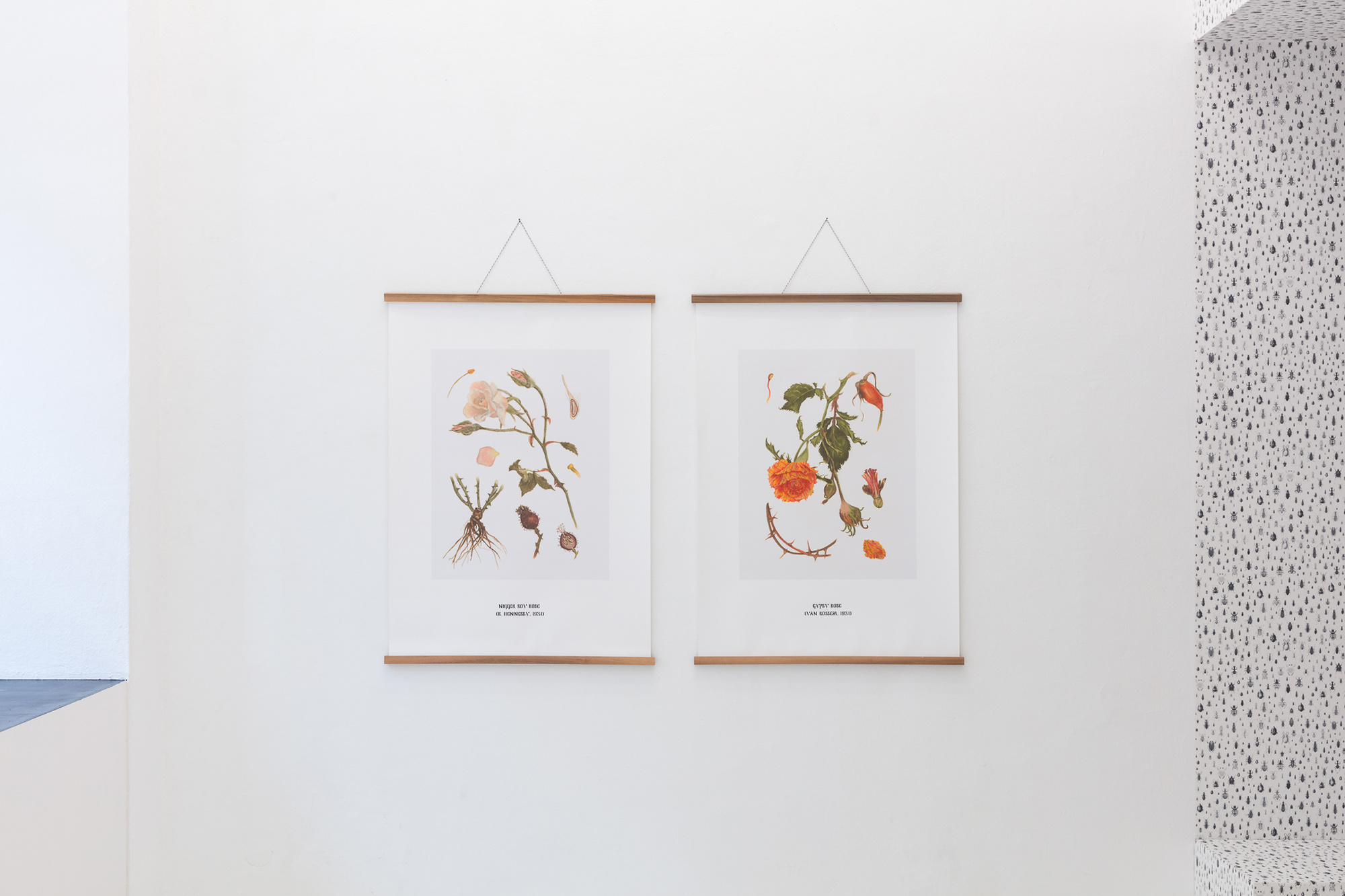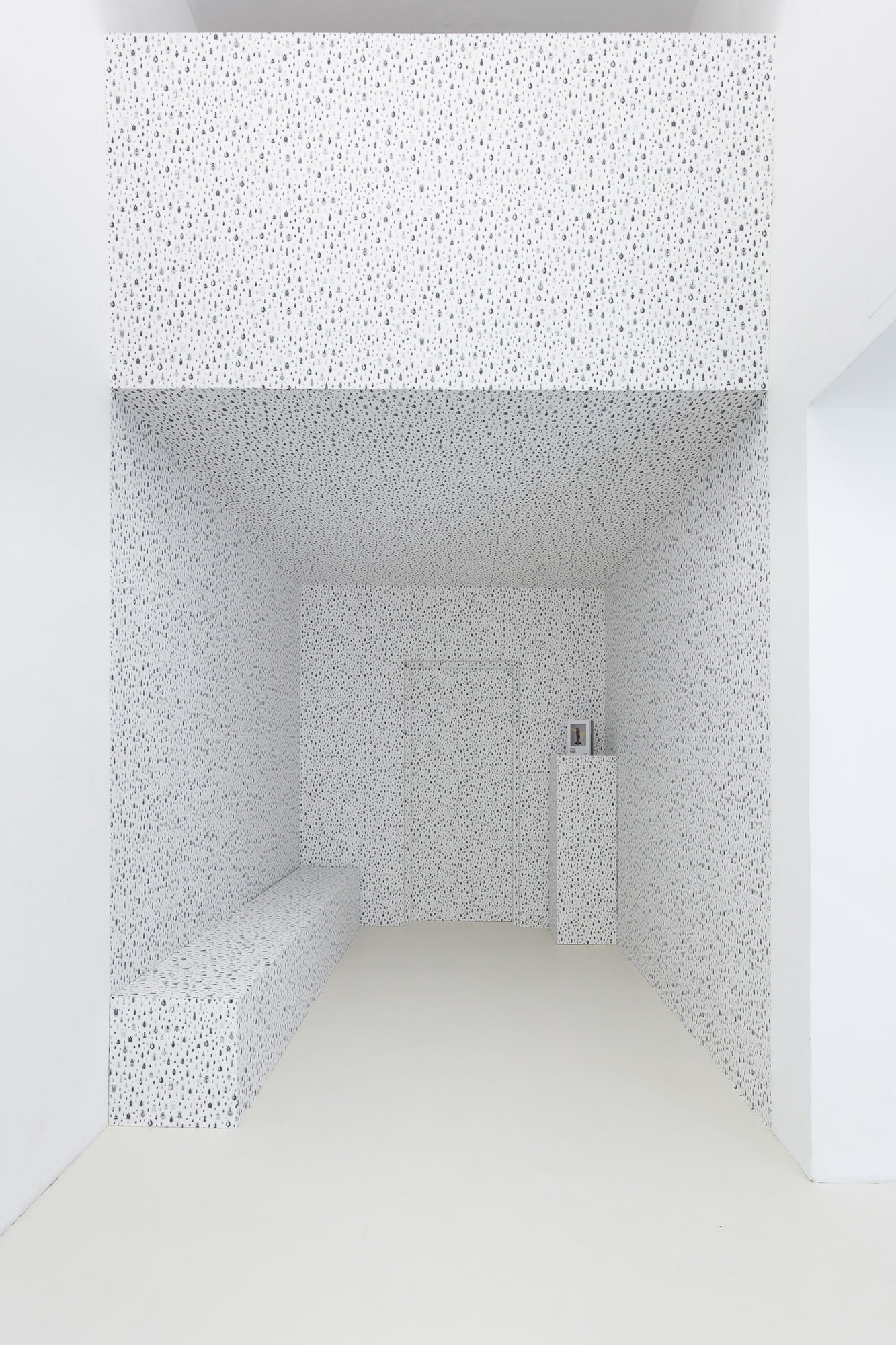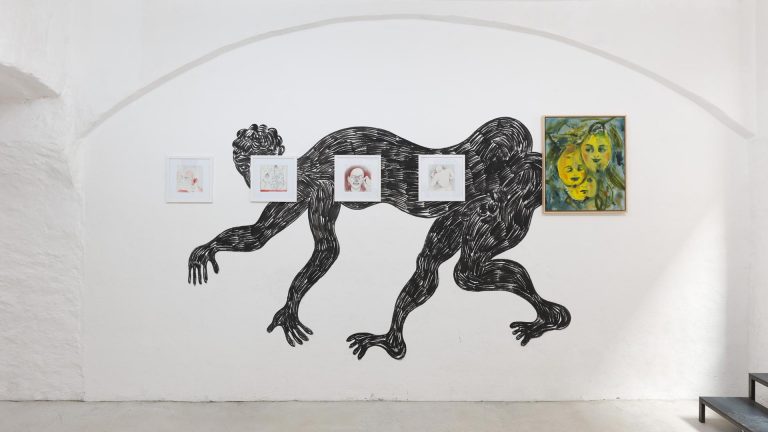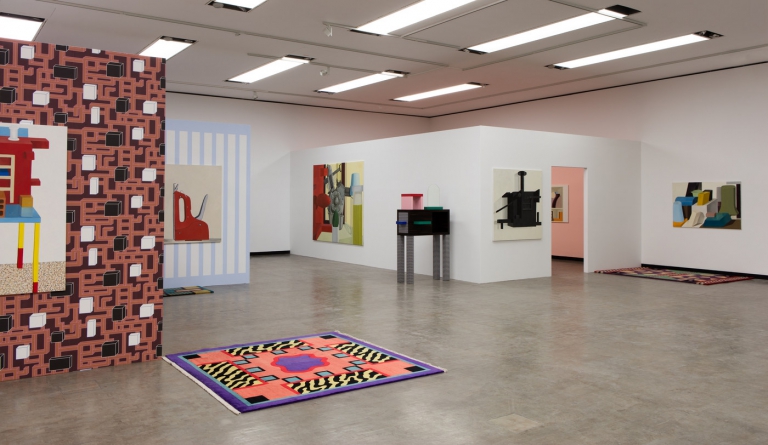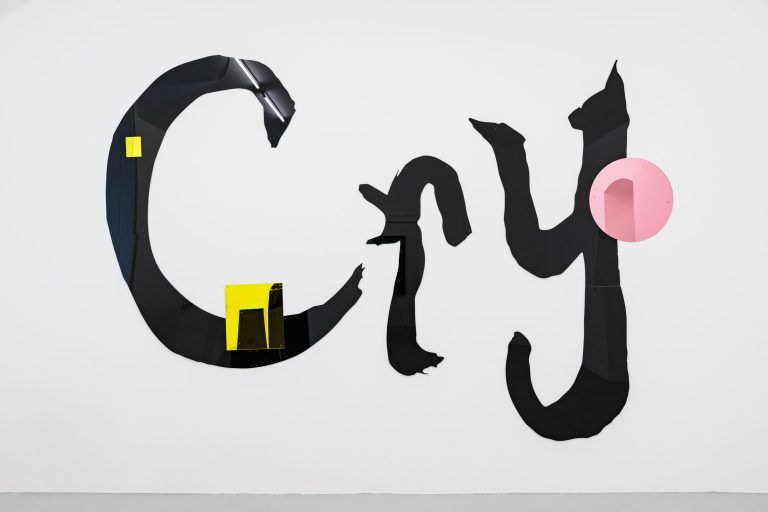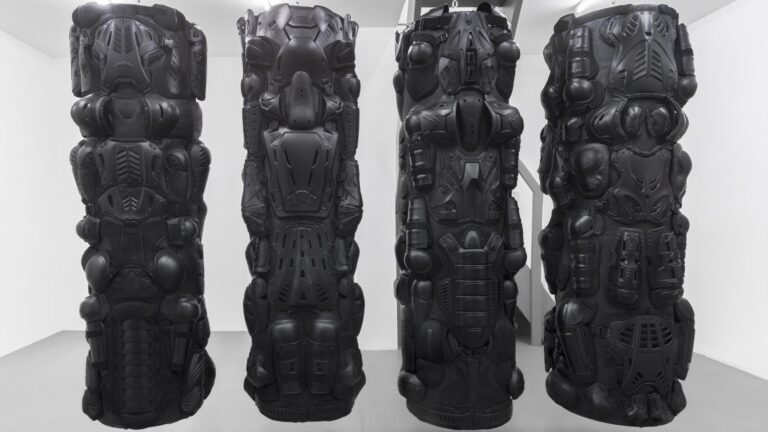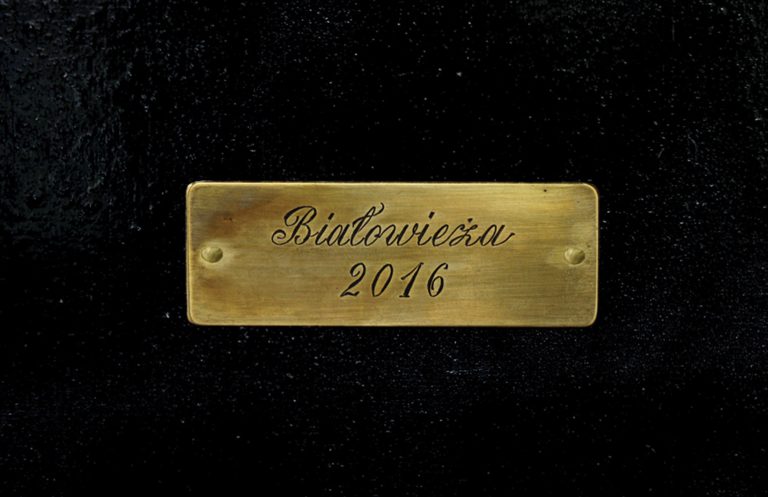Artist: Jasmina Cibic
Exhibition title: Everything We Do Today Will Look Heroic in The Future
Venue: Significant Other, Vienna, Austria
Date: June 30 – October 13, 2018
Photography: kunst-dokumentation.com / all images copyright and courtesy of the artist and Significant Other, Vienna
The legal decorator, the Rose Garden as a battlefield and the looming extinction of the Hitler bug.
‘I don’t want you to be surprised when you see that we redecorated.’
says lawyer Johnnie Cochran to his infamous client O.J. Simpson before a scheduled house visit by the jury in a double homicide trial that became all about race and status and kept at least half a continent in a state of anticipation and tension for the better part of 1995.
Originally, Simpson’s house had mostly featured photographs of him with his white golf-buddies as well as images of his naked, white girlfriend Paula Barbieri, along many other status symbols on display at his luxurious villa situated in an affluent neighbourhood of Los Angeles.
‘This won’t do at all.’
Simpson’s legal defence team decides to go for something that ‘projects the right image’. So the country golfers and nude, white women have to go and are replaced by images of unrelated black children and families, a blow-up of Simpson’s mother, carefully placed African art and Norman Rockwell’s iconic painting of Ruby Bridges walking to class escorted by US Marshals from 1963, tellingly titled The Problem We All Live With.
‘It’s on loan from the Cochran collection’ the lawyer jokes.
——————————————————————————————————-
Rumour has it that all rose breeds named after Democrat presidents have been removed from the White House Rose Garden. After all, it was Reagan who in 1986 signed the proclamation that made the rose the official floral emblem of the United States of America. Nonetheless, the current design of the Rose garden actually dates back to the Kennedy era. Melania Trump on the other hand, has decided to keep Michelle Obama’s layout of the Vegetable and Rose garden.
——————————————————————————————————-
Being generally accustomed to view roses as positively connotated symbols, be it as a representation of purity, an expression of love and romanticism or in the function of national flower it comes with no surprise that roses are also typically used to commemorate or honour distinguished characters of public life such as politicians, giving rise to varieties such as ‘General Washington’ or ‘Mister Lincoln’.
Similarly, in 1933 German collector Oscar Scheibel, decides to dedicate a then undocumented species of a Slovene blind cave beetle to the new Chancellor of Germany, Adolf Hitler.Anophtalmus Hitleri. ‘The eyeless one of Hitler’ does not go unnoticed by the Führer, who sends Scheibel a letter showing his gratitude. And while it is not not possible, it is apparently not in line with taxonomic tradition to change the binomial name of an organism. It is said that the Hitleri beetle is on the brink of extinction due to trading amongst collectors of Hitler memorabilia or as the Telegraph put it ‘Nazi fanatics killing off Hitler’s special beetle’. As a result Anophtalmus Hitleri is now under protection of Slovenian law.
In Everything We Do Today Will Look Heroic in The Future Jasmina Cibic constructs a spatial setting consisting of three elements, employed to bring our attention to the application and distribution of Soft Power in such unsuspected areas of our lives as zoological and botanical taxonomy. The Hitleri bug spreads in form of a wallpaper from a boudoir-like environment into the space, creating an ‘ornamental rash’ as Cibic calls it but also hosting the artists newest publication NADA, dedicated to her eponymous film-trilogy, which scrutinised the political exploitation of successful and failed national icons as well as our complicity as cultural workers in a system where art, architecture and science become in more or less subtle forms persistent tools for political power-play. Taking a next step Cibic invited a selected group of scientific botanical illustrators to imagine how a rose named ‘Nigger Boy’ or ‘Gypsy Rose’ (both existing breeds from 1931) could possibly look like to inspire such a name and in doing so continues not only to highlight widespread offensive and racist remnants in culture but possibly also their easy resurrection in our current climate, because as the welcoming (or is it protecting?) grate proclaims ‘Everything We Do Today Will Look Heroic in The Future’.
Ornament
Whilst Adolf Loos’ phrase ‘Ornament and Crime’ has become widespread and close to common knowledge (and is often misused as ornament equating crime) Semper saw a very different meaning in the existence of ornaments proclaiming them to be bearers of long-lost processes in cultural production and therefore carrying an important social role while appealing to emotions rather than practical matters.
Raumplan
“My architecture is not conceived by drawings, but by spaces. I do not draw plans, facades or sections… For me, the groundfloor, first floor do not exist…There are only interconnected continual spaces, rooms, halls, terraces… Each space needs a different height… These spaces are connected so that ascent and descent are not only unnoticeable, but at the same time functional” said Loos about his conception of architecture before the term Raumplan was to be coined.
The Grate
As windows often risk entry of the unwanted they also need to operate as filters. Possibleintruders ranging from dust, sand, people, fire, light, air,animals or undesirable guests. So for many homeowners the question arose of how to combine security without compromising aesthetics? While John Wesley Harbert patented his ‘Burglar-Proof Window Fastenings’ in 1886, creating a protection that was durable and ornamental; though wooden, stone and iron grills can already be found in ancient Egypt, the Roman empire or medieval Scotland.
Built-in furniture
is in a way a Janus-faced architectural element. While it allows to further maximise and adjust available space than conventional construction methods do and therefore can be said to be economical and sustainable it is also often connected to rather cost-intensive design processes of tailor-made solutions only affordable to the wealthy classes. With the popularisation of DIY practices, more convenient forms of built-in furniture have reached private and public quotidian life.
Wallpaper
was embraced by the rising middle class as a more affordable substitute for aristocratic decoration, such as tapestry and becomes wildly popular in 19th century Europe. Often imitative in character it has rather been associated with kitsch, though there are notable exceptions such as William Morris’ mass- produced Blackthorn wallpaper in1892 and Josef Albers’ Bauhauswallpaper which turns out to be its most popular product. In the20th and 21st century modernismminimalism and many of its successors demand bare walls, though technology already invents new uses for wallpaper such as a signal blocking model or a wallpaper that functions as a touchscreen and lets your Facebook wall materialise.
View from Jasmina Cibic’ exhibition Everything We Do Today Will Look Heroic in The Future at Significant Other, Vienna, 2018
View from Jasmina Cibic’ exhibition Everything We Do Today Will Look Heroic in The Future at Significant Other, Vienna, 2018
View from Jasmina Cibic’ exhibition Everything We Do Today Will Look Heroic in The Future at Significant Other, Vienna, 2018
View from Jasmina Cibic’ exhibition Everything We Do Today Will Look Heroic in The Future at Significant Other, Vienna, 2018
View from Jasmina Cibic’ exhibition Everything We Do Today Will Look Heroic in The Future at Significant Other, Vienna, 2018
View from Jasmina Cibic’ exhibition Everything We Do Today Will Look Heroic in The Future at Significant Other, Vienna, 2018
Jasmina Cibic, The Fruits of Our Land (detail), 2013, gravure print on wallpaper, dimensions variable, commissioned for the Slovenian Pavilion at the 55th Venice Biennial
Jasmina Cibic, The Fruits of Our Land (detail), 2013, gravure print on wallpaper, dimensions variable, commissioned for the Slovenian Pavilion at the 55th Venice Biennial
Jasmina Cibic, The Fruits of Our Land (detail), 2013, gravure print on wallpaper, dimensions variable, commissioned for the Slovenian Pavilion at the 55th Venice Biennial; Jasmina Cibic, NADA, 2018, book, 18 x 25 x 1,5 cm
Jasmina Cibic, The Fruits of Our Land (detail), 2013, gravure print on wallpaper, dimensions variable, commissioned for the Slovenian Pavilion at the 55th Venice Biennial; Jasmina Cibic, NADA, 2018, book, 18 x 25 x 1,5 cm
Jasmina Cibic, The Fruits of Our Land (detail), 2013, gravure print on wallpaper, dimensions variable, commissioned for the Slovenian Pavilion at the 55th Venice Biennial; Jasmina Cibic, NADA, 2018, book, 18 x 25 x 1,5 cm
Jasmina Cibic, The Fruits of Our Land (detail), 2013, gravure print on wallpaper, dimensions variable, commissioned for the Slovenian Pavilion at the 55th Venice Biennial; Jasmina Cibic, NADA, 2018, book, 18 x 25 x 1,5 cm
View from Jasmina Cibic’ exhibition Everything We Do Today Will Look Heroic in The Future at Significant Other, Vienna, 2018
Jasmina Cibic, The Fruits of Our Land (detail), 2013, gravure print on wallpaper, dimensions variable, commissioned for the Slovenian Pavilion at the 55th Venice Biennial
View from Jasmina Cibic’ exhibition Everything We Do Today Will Look Heroic in The Future at Significant Other, Vienna, 2018
Jasmina Cibic, Nigger Boy Rose (R. Hennessy, 1931), 2018, inkjet print on cotton paper, 100 x 70 cm, in collaboration with botanical illustrator Beatriz Inglessis
Jasmina Cibic, Gypsy Rose (Van Rossem, 1931), 2018, inkjet print on cotton paper, 100 x 70 cm, in collaboration with botanical illustrator Beatriz Inglessis
Jasmina Cibic, Everything We Do Today Will Look Heroic in The Future, 2018, iron, 177 x 158 x 6 cm
Jasmina Cibic, Everything We Do Today Will Look Heroic in The Future, 2018, iron, 177 x 158 x 6 cm
Jasmina Cibic, Everything We Do Today Will Look Heroic in The Future, 2018, iron, 177 x 158 x 6 cm



